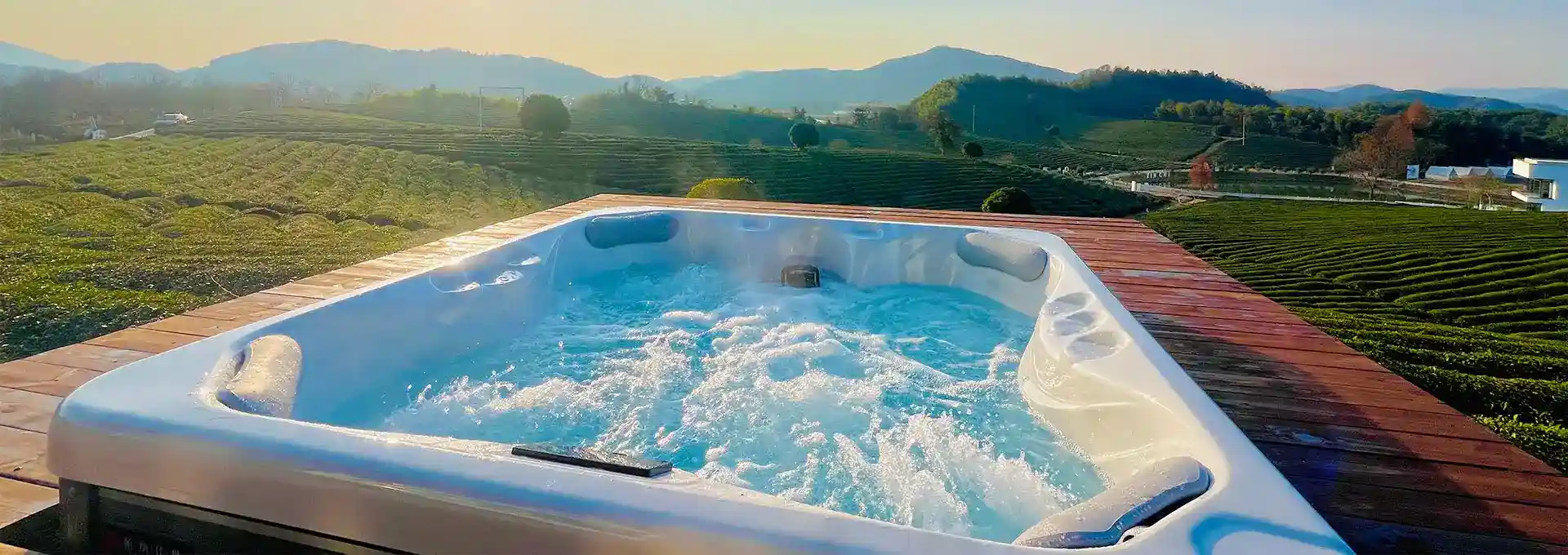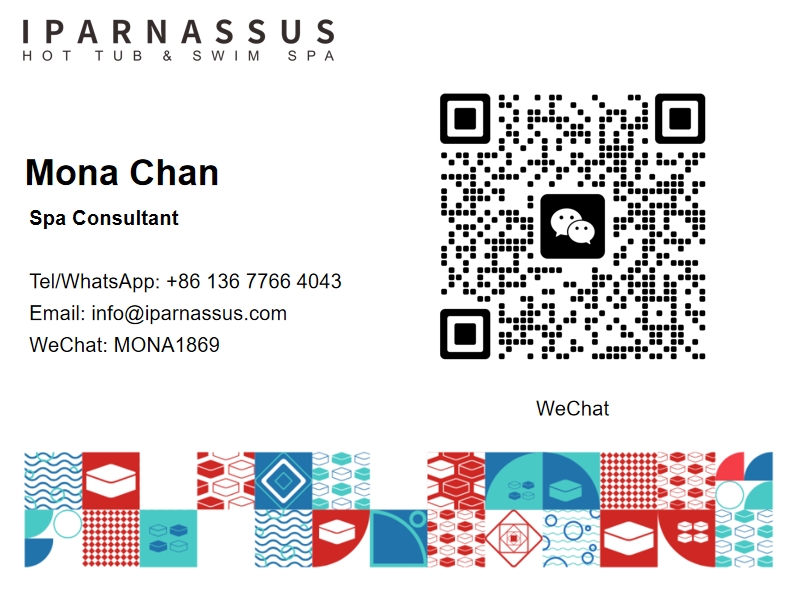Is Low Alkalinity in Hot Tub Dangerous?
2024-09-29 16:08:01
Low alkalinity in a hot tub can indeed be a cause for concern. Alkalinity acts as a buffer in your hot tub water, helping to maintain a stable pH level. When alkalinity is too low, it can lead to rapid fluctuations in pH, which can have several negative consequences for both the hot tub and its users. These effects can range from equipment damage to skin and eye irritation. Understanding the importance of proper alkalinity levels is crucial for maintaining a safe and enjoyable hot tub experience, especially for those who own larger models like 6-seater hot tubs.
What are the ideal alkalinity levels for a 6-seater hot tub?
Maintaining the right alkalinity levels in your 6-seater hot tub is crucial for ensuring a safe and enjoyable soaking experience. The ideal alkalinity range for most hot tubs, including 6-seater models, is typically between 80 and 120 parts per million (ppm). This range provides an optimal buffer for your hot tub's pH levels, helping to prevent rapid fluctuations that can lead to various issues.
For 6-seater hot tubs, which often have a larger water volume compared to smaller models, maintaining proper alkalinity becomes even more critical. The increased water capacity means that any chemical imbalances can potentially affect a larger amount of water, making it more challenging to correct if left unchecked.
To maintain ideal alkalinity levels in your 6-seater hot tub:
1. Regular Testing: Use reliable test strips or a digital water testing kit to check your hot tub's alkalinity levels at least twice a week. This frequency may need to be increased during periods of heavy use or if you're experiencing persistent water quality issues.
2. Gradual Adjustments: If you find that your alkalinity levels are outside the ideal range, make adjustments gradually. For low alkalinity, use an alkalinity increaser product specifically designed for hot tubs. Add the product in small amounts, following the manufacturer's instructions, and retest after 24 hours before making further adjustments.
3. Consider Water Volume: Remember that a 6-seater hot tub typically holds more water than smaller models. This means you may need to use slightly more product to achieve the desired alkalinity increase. Always calculate the correct amount based on your specific hot tub's water capacity.
4. Balance Other Chemicals: Alkalinity is closely linked to pH levels. When adjusting alkalinity, also monitor and adjust your pH levels as needed. The ideal pH range for a hot tub is between 7.2 and 7.8.
5. Use Quality Water: Start with good quality water when filling your hot tub. If your source water has high mineral content or other issues, consider using a pre-filter or consulting with a water treatment professional to address these concerns before they affect your hot tub's chemistry.
By maintaining ideal alkalinity levels in your 6-seater hot tub, you're not only ensuring a safer and more comfortable bathing experience but also protecting your investment. Proper water chemistry helps prevent damage to your hot tub's components, extends the life of your equipment, and reduces the likelihood of costly repairs down the line.
How does low alkalinity affect hot tub equipment and maintenance?
Low alkalinity in a hot tub can have significant impacts on both the equipment and overall maintenance requirements. Understanding these effects is crucial for hot tub owners, especially those with larger models like 6-seater hot tubs, as the consequences of neglecting water chemistry can be more pronounced in larger water volumes.
1. Corrosion of Metal Components:
One of the most serious effects of low alkalinity is the increased potential for corrosion of metal components in your hot tub. When alkalinity is low, the water becomes more aggressive and can start to eat away at metal surfaces. This includes crucial components such as:
- Heater elements
- Pump impellers
- Pipe fittings
- Jets and other metal fixtures
Over time, this corrosion can lead to equipment failure, leaks, and the need for costly repairs or replacements. In a 6-seater hot tub, with its larger size and potentially more complex system of jets and plumbing, the impact of such corrosion can be even more significant and expensive to address.
2. Etching and Staining of Surfaces:
Low alkalinity can also lead to etching and staining of your hot tub's surfaces. The acidity that often accompanies low alkalinity can slowly erode the finish of your hot tub shell, leading to a rough texture and potentially creating small pits or cracks where bacteria can hide. This not only affects the aesthetics of your hot tub but can also make it more difficult to clean and maintain proper sanitation.
3. Increased pH Fluctuations:
Alkalinity acts as a buffer for pH levels in your hot tub water. When alkalinity is low, pH levels can fluctuate rapidly and dramatically. These swings in pH can cause a range of issues:
- Irritation to skin and eyes for bathers
- Reduced effectiveness of sanitizers like chlorine
- Potential for scale formation when pH swings high
- Increased likelihood of algae growth when pH drops
For a 6-seater hot tub, maintaining stable pH becomes even more critical due to the larger water volume and potentially higher bather load.
4. Impact on Sanitizer Efficiency:
Low alkalinity and the resulting pH fluctuations can significantly impact the efficiency of your hot tub's sanitizers. Chlorine and bromine, the most common hot tub sanitizers, work best within specific pH ranges. When pH levels are unstable due to low alkalinity, these sanitizers become less effective at killing bacteria and other contaminants. This can lead to:
- Increased chemical usage as you try to maintain proper sanitation levels
- Higher risk of waterborne illnesses for bathers
- More frequent need for shock treatments to address water quality issues
5. Increased Maintenance Requirements:
Dealing with the effects of low alkalinity often results in increased maintenance requirements for your hot tub. You may find yourself needing to:
- Test and adjust water chemistry more frequently
- Clean and scrub surfaces more often to address staining or etching
- Replace water more frequently due to difficulty in maintaining proper chemistry
- Perform more frequent equipment checks and maintenance to catch corrosion early
For owners of 6-seater hot tubs, this increased maintenance can be particularly time-consuming due to the larger water volume and more extensive equipment.
To mitigate these effects and ensure proper maintenance of your 6-seater hot tub:
- Invest in quality water testing equipment and test regularly
- Use appropriate alkalinity increasers as needed to maintain levels between 80-120 ppm
- Consider using an automatic pH/alkalinity control system for more consistent levels
- Perform regular equipment checks to catch any signs of corrosion or damage early
- Maintain a consistent cleaning and maintenance schedule
- Educate all users about the importance of showering before use to reduce contaminants
- Consider professional servicing if you're struggling to maintain proper water chemistry
By understanding and addressing the impacts of low alkalinity, you can significantly extend the life of your hot tub equipment, reduce maintenance headaches, and ensure a safer, more enjoyable experience for all users of your 6-seater hot tub.
Can low alkalinity in a hot tub cause skin irritation?
Low alkalinity in a hot tub can indeed lead to skin irritation, and this is a crucial concern for hot tub users, especially in larger models like 6-seater hot tubs where more people might be affected. Understanding the connection between alkalinity and skin health is essential for maintaining a comfortable and safe hot tub environment.
The relationship between low alkalinity and skin irritation is primarily indirect. Low alkalinity itself doesn't directly irritate the skin, but it creates conditions that can lead to skin discomfort and other related issues. Here's a detailed look at how low alkalinity can affect skin health in a hot tub setting:
1. pH Fluctuations:
Low alkalinity reduces the water's ability to buffer against pH changes. This can result in rapid and frequent pH fluctuations. When the pH of the water doesn't match the natural pH of human skin (which is slightly acidic, typically around 5.5), it can disrupt the skin's protective barrier, leading to:
- Dryness and itchiness
- Redness and inflammation
- Increased sensitivity
- Exacerbation of existing skin conditions like eczema or psoriasis
In a 6-seater hot tub, where users might spend extended periods soaking, these effects can be more pronounced due to longer exposure times.
2. Sanitizer Efficiency:
Low alkalinity often leads to unstable pH levels, which in turn affects the efficiency of sanitizers like chlorine or bromine. When sanitizers are not working optimally, it can result in:
- Increased bacterial growth in the water
- Higher likelihood of skin infections or rashes
- Build-up of organic contaminants that can irritate the skin
The larger water volume in a 6-seater hot tub means that maintaining proper sanitizer levels is even more critical to prevent these issues.
3. Chemical Imbalances:
When alkalinity is low, hot tub owners might be tempted to overcompensate by adding excessive amounts of chemicals to balance the water. This can lead to:
- Chemical burns or irritation from high concentrations of balancing agents
- Dry, itchy skin from overly harsh water conditions
- Potential allergic reactions to chemical additives
4. Mineral Precipitation:
Low alkalinity can sometimes lead to the precipitation of minerals in the water, especially calcium. These minerals can form tiny, abrasive particles that can irritate the skin, leading to:
- A gritty or sandy feeling on the skin
- Micro-abrasions that can cause redness and discomfort
- Increased risk of clogged pores and skin breakouts
5. Impact on Natural Oils:
The human skin naturally produces oils that help protect and moisturize it. Water with low alkalinity and fluctuating pH can strip these natural oils more aggressively, resulting in:
- Dry, tight-feeling skin after hot tub use
- Increased risk of skin cracking or chapping
- Potential long-term effects on skin health with frequent exposure
To mitigate these risks and ensure a skin-friendly environment in your 6-seater hot tub:
- Maintain alkalinity levels between 80-120 ppm consistently
- Use test strips or digital testers to check water chemistry at least twice a week
- Adjust chemicals gradually to avoid overcorrection
- Encourage all users to shower before entering the hot tub to reduce contaminants
- Consider using enzyme products to break down organic contaminants
- Invest in a quality water care system that helps maintain stable water chemistry
- Educate all users about the importance of proper water balance for skin health
- If skin irritation persists, drain and refill the hot tub, and consider having your source water tested for any underlying issues
By maintaining proper alkalinity levels and overall water balance in your 6-seater hot tub, you can significantly reduce the risk of skin irritation and ensure a more comfortable, enjoyable, and health-promoting experience for all users. Remember, the goal is to create a hot tub environment that complements and supports skin health, allowing you to fully relax and enjoy the therapeutic benefits of your hot tub without worry.
In conclusion, while low alkalinity in a hot tub can indeed be dangerous, proper understanding and maintenance can mitigate these risks effectively. By regularly testing and adjusting your hot tub's water chemistry, particularly in larger models like 6-seater hot tubs, you can ensure a safe, comfortable, and enjoyable experience for all users. Remember, maintaining proper alkalinity is not just about preventing equipment damage – it's about creating a healthy and relaxing environment that allows you to fully enjoy the many benefits of hot tub ownership.
For more information on hot tub installations and to find out more about our products, please feel free to contact us at info@iparnassus.com.
References:
1. Johnson, A. (2022). Hot Tub Water Chemistry: A Comprehensive Guide. Journal of Aquatic Leisure, 15(3), 78-92.



